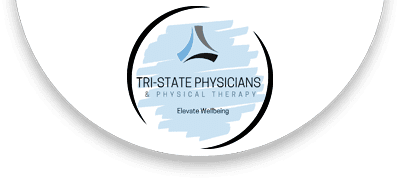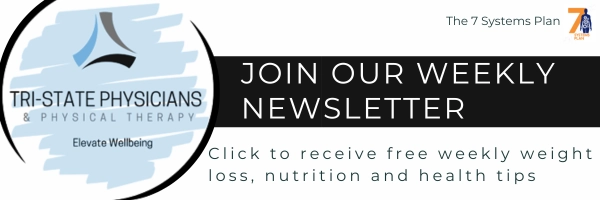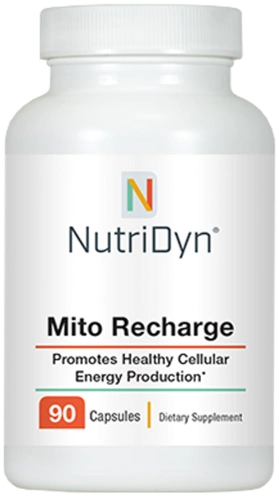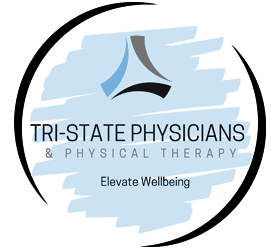Support Your Mitochondria Naturally in South Sioux City NE
Every day offers you a chance to improve your health and vitality by treating your mitochondria well. If you want to increase your life span, reduce your disease risk, and improve your quality of life, this article is for you!
Despite our best efforts to lead healthy lives, every day can be full of hazards for our mitochondria in South Sioux City NE. There’s an art to bolstering their efforts, and fortunately, though science-based, it isn’t formidable and has excellent benefits. Here’s your guide to supporting these cellular powerhouses:
How To Support Your Mitochondria Naturally in South Sioux City NE
In today’s fast-paced, technologically driven world, it’s easy to overlook some of the body’s fundamental processes that govern health. The mitochondria, intricate power plants responsible for producing energy, are at the heart of our cells. Yet, as with sophisticated machinery, these robust power plants can slowly deteriorate. Various strategies are available to invigorate these cellular marvels and limit their decline.
Unlocking the secrets of mitochondrial health is akin to understanding a car’s engine. Ensuring optimal performance requires meticulous attention to its needs.
1. Provide the Correct Fuel: Prioritize Real Food
Eliminate Harmful Foods: To kick-start this journey, cut out foods that harm mitochondria and fill up on the right fuel. Think of this as the premium gas our engine craves. It’s paramount to reduce the nutritional strain on these cellular powerhouses by eliminating foods that inflame the Systems. Targets to search and destroy (or tone down) include sugar, alcohol, gluten, dairy, highly processed foods, and any foods you are intolerant to. Also, limit processed oils rich in omega-6 fatty acids like corn, soybean, and canola.
Prioritize Nutrient-Dense Foods: Switching gears, let’s talk about the right fuel. Fill up on antioxidant-rich fruits and vegetables, and don’t forget those fragrant spices and herbs. These treasures are saturated with potent polyphenols, essential for optimal mitochondrial function. If you are following the 7 Systems Plan, you already know the 10 food groups to consume daily for optimal mitochondrial energy and health.
Some nutrients deserve a spotlight. We will cover this in a minute, but let’s examine additional essentials to mitochondrial health.
2. Keep the Radiator Full: Hydrate. It’s a word we hear frequently, but its implications are profound. Each of our cells relies on a steady stream of clean, filtered water to function optimally. Within these cells, mitochondria, our energy-producing powerhouses, have a particular thirst. When deprived of consistent hydration, mitochondria falter, primarily because they need access to hydrogen molecules abundant in H2O.
Imagine plugging multiple gadgets into an overloaded socket. There’s potential for a short circuit. Similarly, occasional guzzling can’t compensate for prolonged hydration neglect. Consistent hydration throughout the day ensures our Energy System operates without a hitch.
So, what’s the hydration benchmark? Aiming for 8 ounces of water (essentially a cup) every hour or two is a good rule of thumb. Of course, if you’re breaking a sweat with workouts or merely soaking up some sun, that amount should see an uptick. After all, it’s not just about quenching thirst; it’s about fueling those cellular dynamos for optimal health.
3. Avoid Road Hazards: Limit Environmental Toxins
Mitochondria require more than just the proper nutrients to function optimally. An equally significant factor in supporting their health is reducing exposure to environmental toxins that can undermine their function.
Our bodies face a daily onslaught of harmful substances. Everything from casual alcohol consumption to lurking pesticides, from insidious fluoride to heavy metals such as lead, cadmium, and mercury, can enter our bodies. These adversaries can wreak havoc, with mitochondrial DNA often bearing the brunt of their damage even more than the cell’s nucleus. This damage translates to an elevated risk of numerous health complications.
But there’s good news. By taking deliberate steps, one can mitigate these risks. Consider these strategies:
- Opt for herbal teas or water instead of alcoholic drinks. This simple swap can reduce toxin intake considerably.
- Make a switch to organic fruits and vegetables, minimizing pesticide consumption.
- Reevaluate personal care routines. Choosing chemical-free products ensures harmful substances stay off your skin.
- Investing in a high-quality water filter ensures clean, uncontaminated hydration.
- If you smoke, consider quitting. Also, avoid second-hand smoke.
- Be cautious with seafood. Large fish, such as tuna or swordfish, often contain elevated toxin levels.
- Evaluate dental health choices, possibly removing dental amalgams.
- Given its potential arsenic contamination, be wary of rice grown in the southern US.
- A simple practice of removing shoes before entering homes can reduce toxins.
- Always wash new clothes before wearing them. It’s an easy step to curb chemical exposure.
By integrating these steps into daily routines, you’re fostering a healthier environment and ensuring the vitality of your mitochondria.
4. Avoid Fuel Contaminants: Caution with Pharmaceuticals
The microscopic world of our cells is loaded with mitochondria, these tiny energy factories pivotal to our well-being. But like all well-oiled machines, they’re susceptible to breakdowns, sometimes due to external factors like pharmaceutical drugs.
Now, don’t get me wrong. Pharmaceutical drugs are undoubtedly lifesavers in many scenarios. They alleviate pain, combat diseases, and restore balance. However, their presence in modern life, sometimes handed out too liberally, comes with its challenges. A subset of these medicines contains potential disruptors of mitochondrial function. The consequence? A cascade of health issues, some of them severe.
Eyeing some usual suspects, we have certain antibiotics like tetracyclines, chemotherapy agents such as doxorubicin, and widely consumed statins. Salicylic acid, the active component in many over-the-counter aspirin, joins the list. And if you’re managing diabetes with metformin or addressing mental health concerns with SSRIs or valproic acid, it’s vital to be informed about their potential mitochondrial impacts.
So, where does this leave us? Before starting any medication, read up. Weigh its benefits against its side effects. Consult your functional medicine healthcare provider, discuss potential risks concerning mitochondrial health, and evaluate alternative treatments. If medications are unavoidable, strategize on other health avenues to bolster your mitochondria. Your cellular well-being might depend on it.
5. Don’t Hold the Gas Pedal Down in Park: Control Stress
While the modern world touts many advancements, it has also ushered in an era of heightened stress. Beneath the surface, our cells silently bear the brunt of this onslaught, with our mitochondria being particularly susceptible.
Stress doesn’t merely play havoc with our moods or sleep patterns. Its tentacles reach deeper, impacting the very core of our cellular health. Excessive stress can alter the structure and functionality of mitochondria, causing a dip in cellular energy. This downturn isn’t trivial; it affects vital biological processes, jeopardizing all 7 Systems.
However, there’s a silver lining. Employing techniques like journaling can prove therapeutic, helping us navigate and process our emotions. Physical practices like yoga aren’t just about flexibility; they’re also potent stress busters that harmonize the body and mind. Meditation is a powerful tool to center oneself amidst chaos. Breathing techniques can also do wonders.
Don’t stop there. Embrace simplicity. Sometimes, a leisurely walk in nature or a spontaneous conversation with an old friend can work wonders. The essence is to find equilibrium, as preserving mitochondrial health against the rigors of stress is, without a doubt, a golden investment. The 7 Systems Plan intentionally teaches simple, daily 2-minute stress reduction techniques.

6. Turn on the Head Lights: Use Light Therapeutically
The relationship between light and health is more intricate than one might assume. The quality and type of light we expose ourselves to can spell the difference between optimal mitochondrial functioning and gradual decline.
Light isn’t merely about visibility. It’s a fundamental nutrient essential for our biology. Natural sunlight, for instance, isn’t just our ticket to a healthy dose of Vitamin D. It’s pivotal for many bodily functions. At the helm of these is its role in hormonal regulation and, notably, mitochondrial performance. Furthermore, sunlight is vital in setting our circadian rhythm, a natural timekeeper governing sleep patterns and hormonal release, like cortisol and melatonin.
As with most things, there’s a flip side. Enter blue light, predominantly emitted from electronic devices and certain lightbulbs. While it’s beneficial during daylight hours, it’s a disruptor at night. This form of light stifles melatonin production, nudging the body into a state of alertness when it should be winding down.
On the other hand, red light emerges as a savior. It doesn’t just soothe and stimulate collagen production; it also benefits our mitochondria. By donating photons, it elevates ATP energy levels, the very fuel our cells run on.
What can you do? Prioritize natural sunlight exposure, ideally during the morning. Mind the lighting in your sanctuaries, especially bedrooms, keeping them devoid of blue light post-sunset. If your routine has you up during late hours, consider blue-blocking glasses. And don’t shy away from exploring therapeutic options like red light therapy or infrared saunas. They could be the luminescent key to mitochondrial vigor. Check out my favorite red-light sauna.
7. Use Your Motor: Harness the Magic of Mitohormesis
When you hear the term ‘stress,’ it’s likely that negative connotations come to mind. But here’s a twist: not all stress is detrimental. It can be exceptionally beneficial in the proper doses, a concept encapsulated in the term mitohormesis.
Mitohormesis is not just another buzzword in the health sphere; it’s a scientific phenomenon describing how controlled, mild metabolic stress can bolster cellular health and longevity. The reactive oxygen species (ROS—harmful chemicals formed inside the body) are at the heart of this process. While in abundance, ROS can wreak havoc and increase aging; in moderation, they’re valuable for cellular equilibrium and function.
Ever heard the saying, “What doesn’t kill you makes you stronger?” Mitohormesis is an excellent example of this adage. Picture the rigorous act of weightlifting. The initial strain breaks down muscle fibers, but a restorative process follows, strengthening and enhancing powerful contractions. Avoid this ‘stress,’ and the muscle remains stagnant or atrophies.
To harness the benefits of mitohormesis, consider these potent minor stressors:
- Engaging in high-intensity interval training (HIIT), where short bursts of exertion push your body’s boundaries.
- Trying intermittent fasting, cycling between periods of eating and fasting.
- Opting for manual therapies like massage or chiropractic adjustments.
- Experiencing cryotherapy, where short exposures to cold conditions stimulate the body’s defenses.
It’s about finding that sweet spot between challenge and comfort to ensure our cells remain agile and robust.
8. Use Powerful Fuel Additives: Consume Essential Supplements
Ensuring mitochondria’s optimal function can be a game-changer for overall well-being. One effective strategy? Take the right supplements. NutriDyn’s Mito Recharge formula contains innovative ingredients that support energy production in the mitochondria. As we age, mitochondrial function naturally decreases, and free radical production increases, damaging mitochondrial DNA. The body’s ability to efficiently produce energy can result in a host of health concerns.
The nutrients in Mito Recharge help organelles efficiently carry out their role in producing adenosine triphosphate (ATP), the energy currency of cells, which helps support immune, brain, and heart health. It is formulated with mitochondrial-supporting ingredients called mito-nutrients with a high antioxidant capacity.
Bruce Ames, Ph.D., coined mito-nutrients based on years of animal and human research studies. He determined that mito-nutrients can have up to four mechanisms of action within mitochondria, including:
- Promoting mitochondrial enzymatic activity.
- Inducing phase II detoxification enzymes to support antioxidant capacity.
- Scavenging free radicals and promoting healthy inflammatory markers.
- Supporting healthy mitochondrial membranes.
The carefully selected nutrients in Mito Recharge each fulfill at least one of these mechanisms:
- Alpha-lipoic acid, hydroxytyrosol, sulforaphane, quercetin, resveratrol, and taurine are considered mito-nutrients since they help support the actions of items 1, 3, and 4 of Ames’ definition.
- Acetyl-l-carnitine HCI and green tea catechins from EGCG help support the actions of items 1 and 3 of Ames’ definition. 2,3
- Coenzyme Q10 is a primary factor in ATP generation in the electron transport chain and is defined as a mito nutrient based on action item 1 of Ames’ definition 2,3
- Hydroxytyrosol, sulforaphane, quercetin, resveratrol, taurine, EGCG, N-acetyl-l-cysteine, and alpha-lipoic acid support mitochondria based on item 2 of Ames’ definition.
Incorporating this supplement can promote robust mitochondrial health and, by extension, a more vibrant and energetic life.
In Conclusion
Improve your quality of life by supporting your mitochondrial health. By nurturing these cellular dynamos, each of the 7 Systems is enhanced, and you will enjoy the great benefits of healthy mitochondria.
For your health
Dr. Pat
Video of the Week
Sign up below to get our weekly newsletter
sent directly to your email inbox!
OFFICE HOURS
Monday
8:00am - 6:00pm
Tuesday
8:00am - 6:00pm
Wednesday
8:00am - 6:00pm
Thursday
8:00am - 6:00pm
Friday
8:00am - 6:00pm
Saturday
8:00am - 10:45am
Sunday
Closed
Tri-State Physicians &
Physical Therapy Clinic
3900 Dakota Avenue #6
South Sioux City, NE 68776







